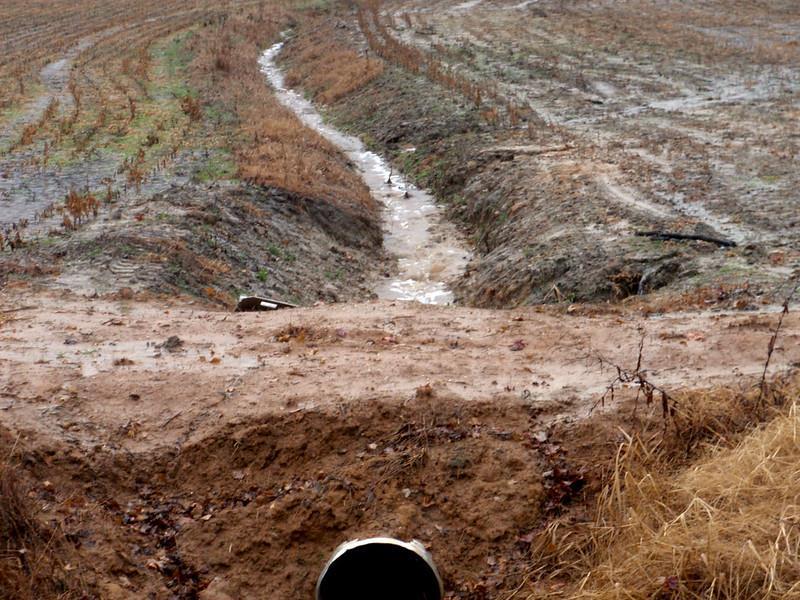
3 minute read
Issues
Multiple issues have already been mentioned and mapped that could be contributing to flood risk and WFD failures. However, there are further potential issues that may be influential which will be explored in the following pages.
Issues
Pollution and Abstraction
Pollution incidences themselves will directly affect water quality, but consented discharges into watercourses and chemical runoff from roads exacerbated by rainwater may also be sources of pollution. There are no recorded pollution incidences in the catchment but there is one source of consented discharges. Located west of Tiverton but proximal is a sewage discharge attributed to St. Pauls Vicarage and Pentlands. The type of discharge is recorded as final/treated effluent and is discharged into a soakaway with the aim of infiltration into the soil. Another consented discharge site is located just outside of the catchment outlet. This is for the paddling pool at West Exe Recreation Ground discharging the pool water into the Cottey Brook. Licensed water abstraction points may serve as sources of risk to ground water quantity and availability. There is a water abstraction point located within Tiverton on the Cottey Brook at the catchment outlet. This abstraction site is located within the flood risk zone. The licensed abstraction is for Mid Devon District Council for industrial, commercial, and public services.
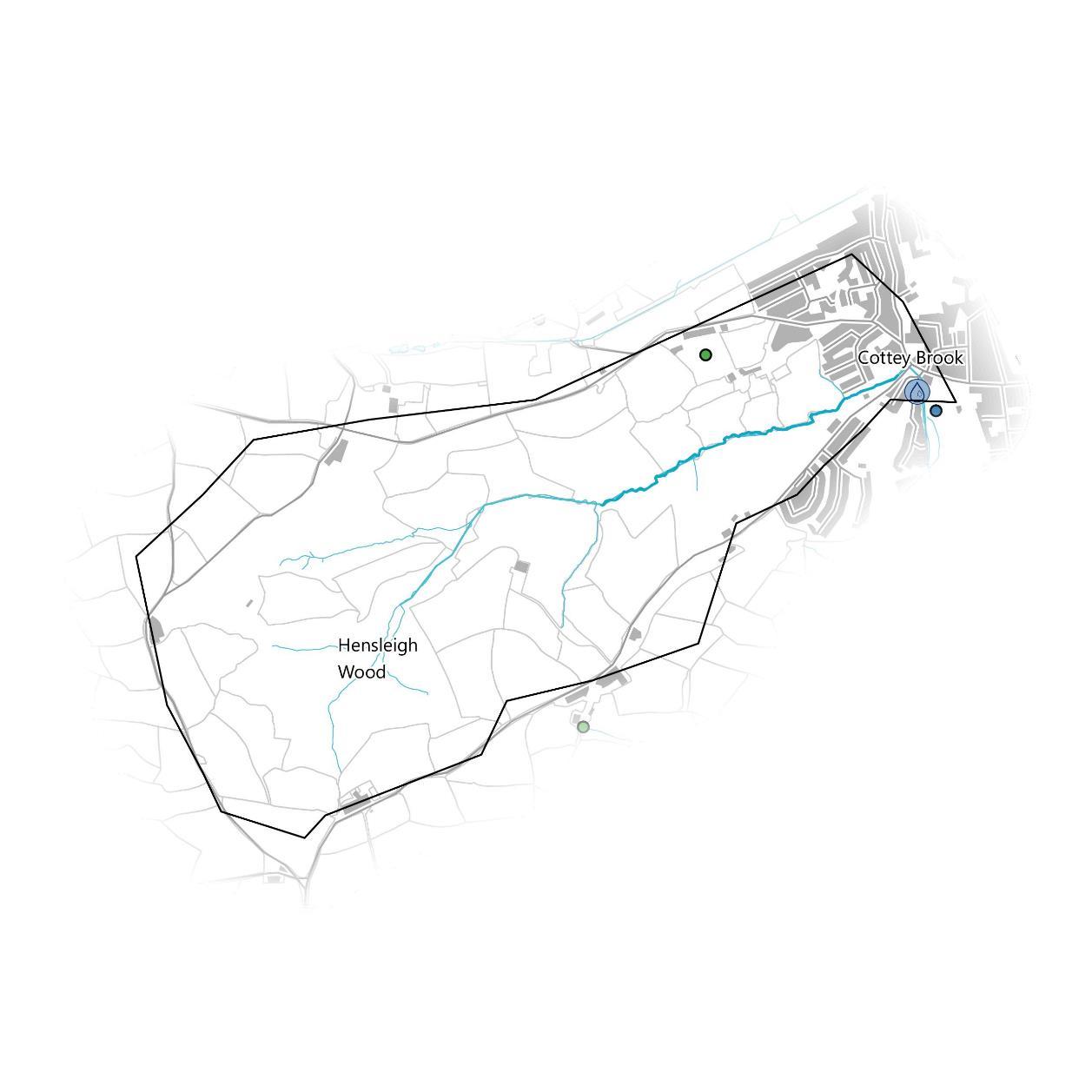
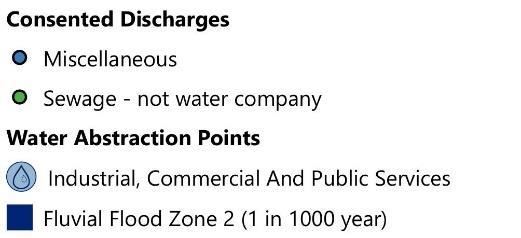
Issues
Hydrological Connectivity
Surface flow pathways are the routes rainwater accumulates and follows when it lands to the nearest depression or watercourse. As it flows, surface water can pick up any number of chemicals, soil, and debris and carry them into the watercourse with it. This serves to demonstrate why community engagement and working with land owners is so important, as the effects of practices upstream in the catchment cascade down via these routes. Pathways have been modelled in 2 different ways here. The first are modelled using topographic data and software called SCIMAP (left). Only the routes with above average wetness are shown. The flat topography of floodplains skews the modelling process and the pathways in these areas should be considered unreliable. The second method uses SCALGO Live (right). Flow routes with at least 1km2 upstream area are shown. Areas that would be flooded if 15cm of rain were to fall during a storm event are also mapped. Flooded areas are coloured by their water volume from light to dark.
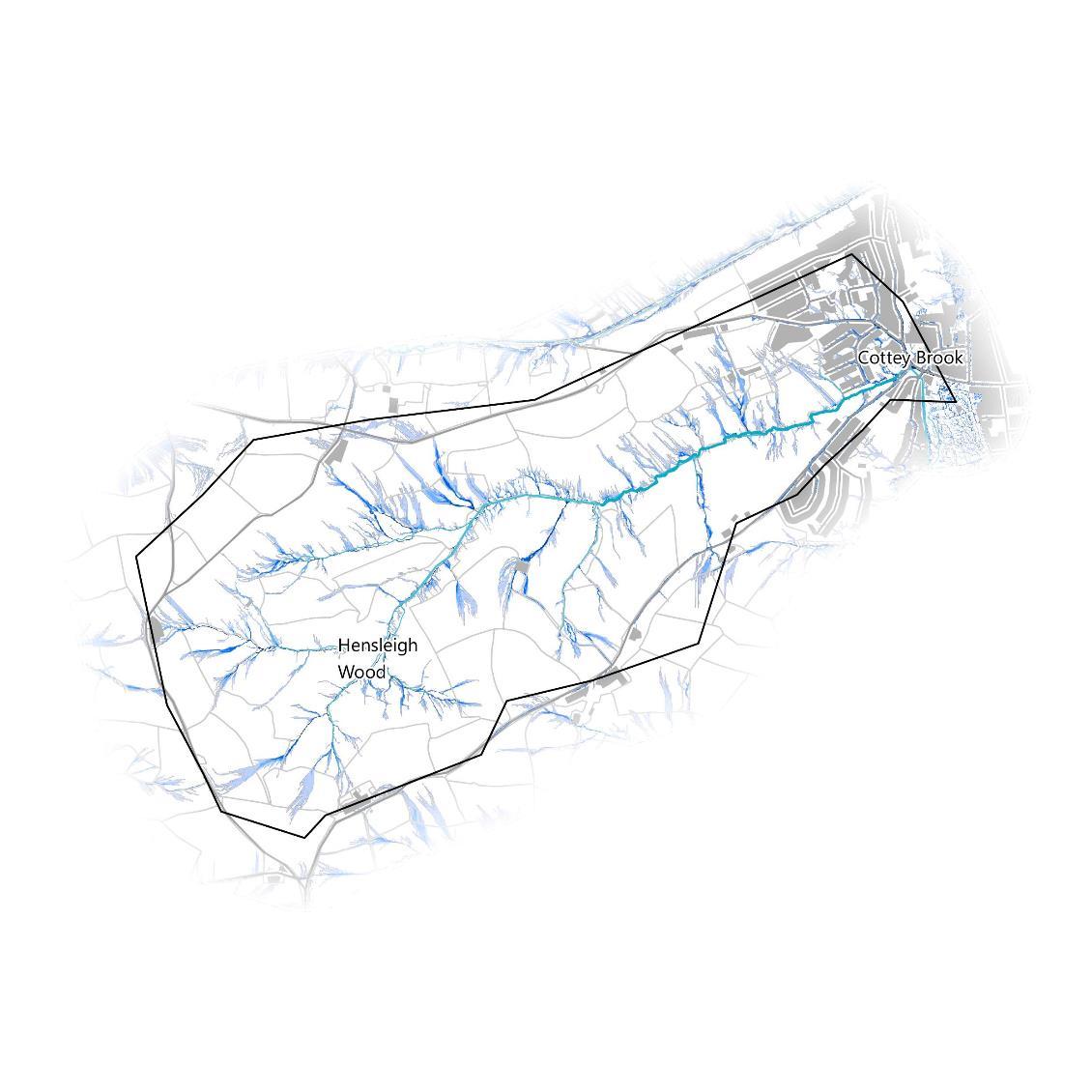
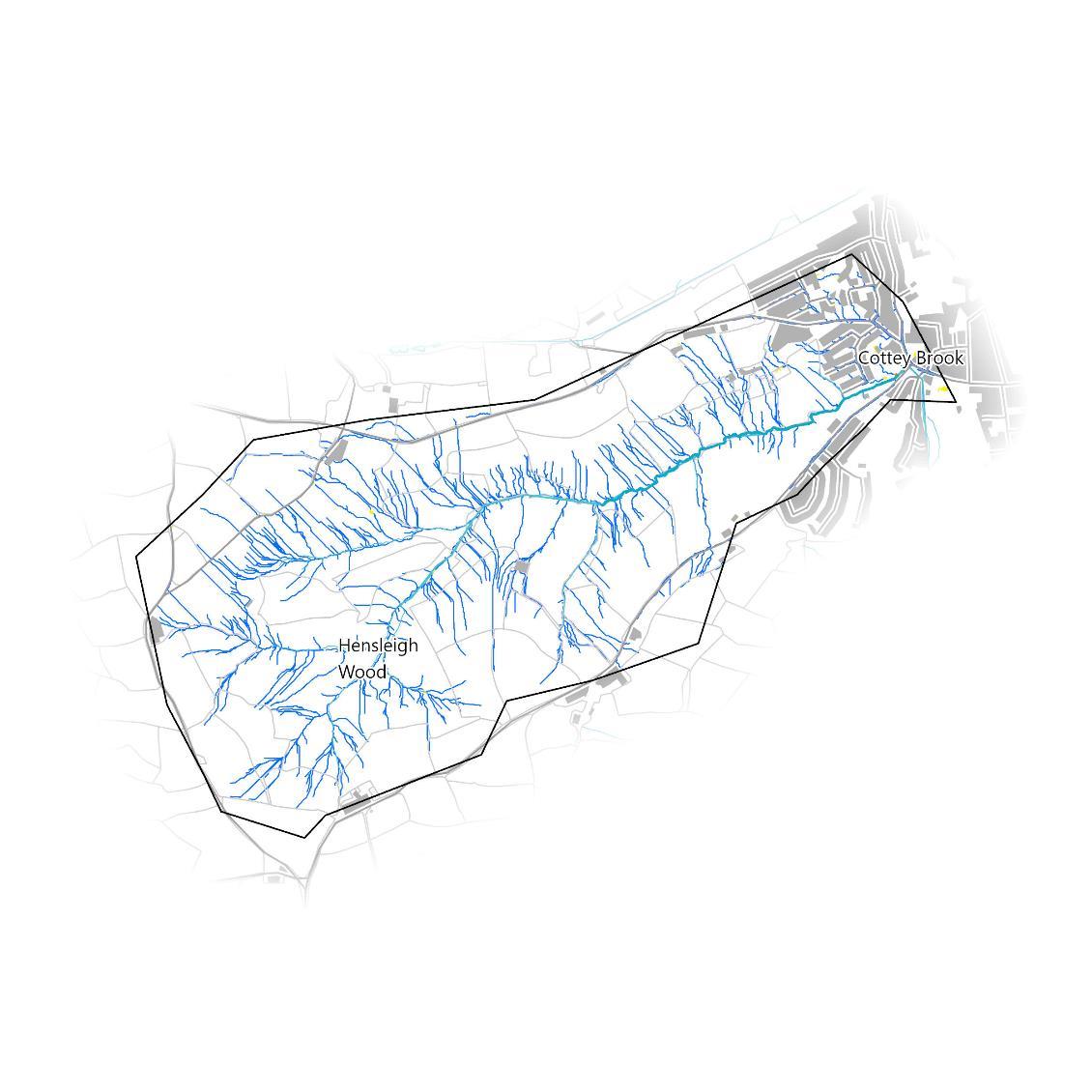
Issues
Issues Identified During Walkover Surveys
During the walkover surveys, experienced surveyors at WRT recorded points of interest and concern, as well as potential natural flood management opportunities. The results are mapped (right) but it should be noted that the map is by no means exhaustive.
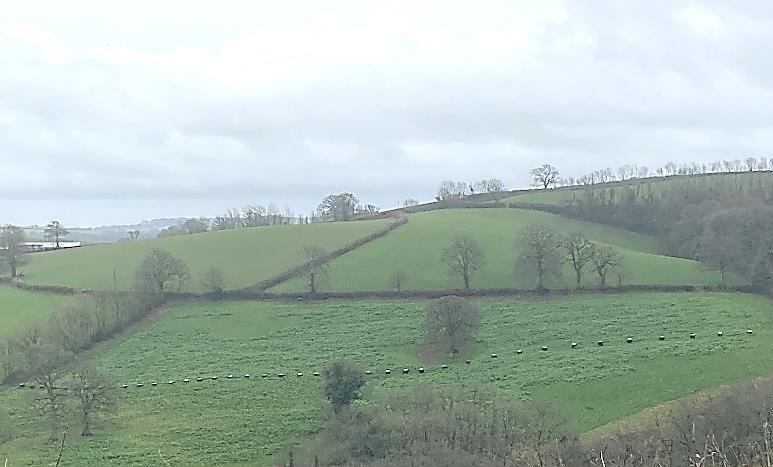
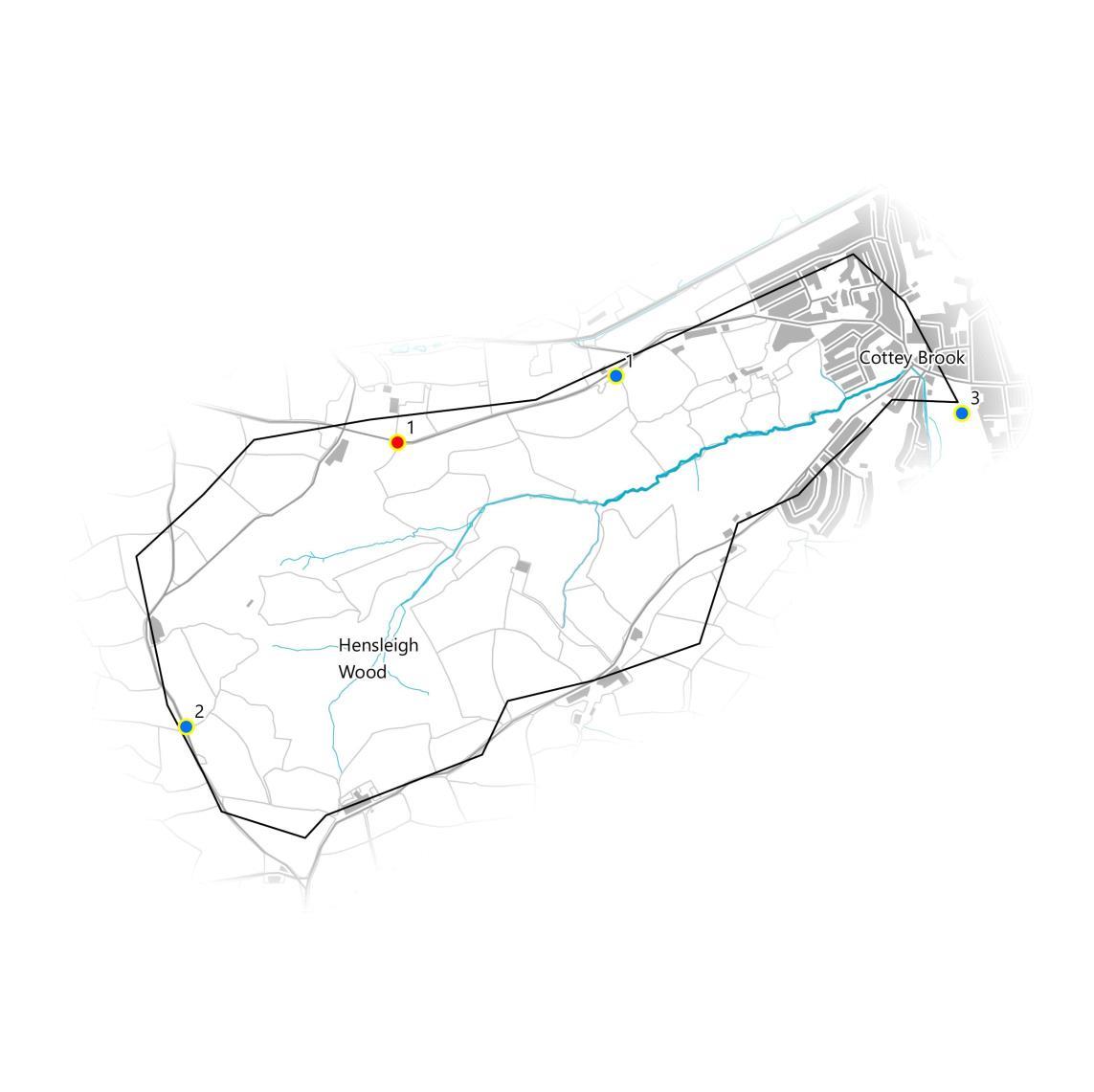
A strip-grazing layout was noted during the survey. If this practice were to take place in a wet February on such a steep slope then the field may be susceptible to compaction, erosion and rapid run-off of poor water quality.
No animals were present at the time.
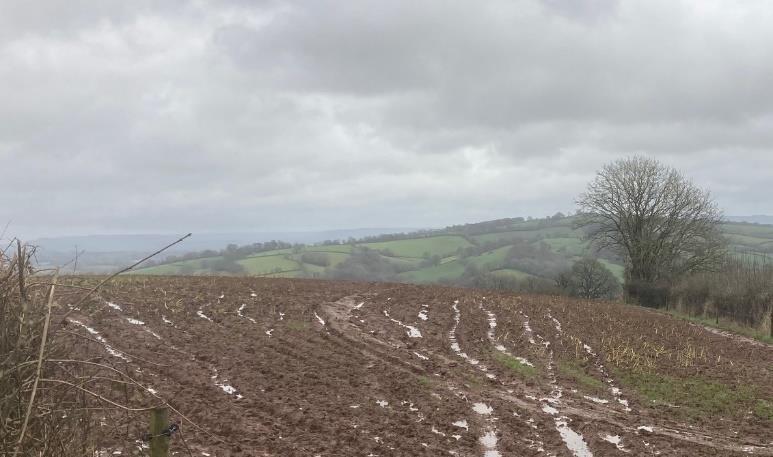
Bare soil and stubble was noted in a neighbouring catchment which shows standing water, run-off and lack of infiltration.
This wasn’t observed in the Cottey Brook, but the similar soil means that a closer look at soil health could be advantageous to water quality and infiltration.
This map of issues was generated after one walkover survey, reflecting the situation at the time of survey. It is not exhaustive and doesn’t reflect all issues present in the catchment which will take much more effort to determine. A greater range of all the issues is present within the previous section. Any projects delivering in the catchment should undertake their own walkovers for confirmation and addition to the list.



